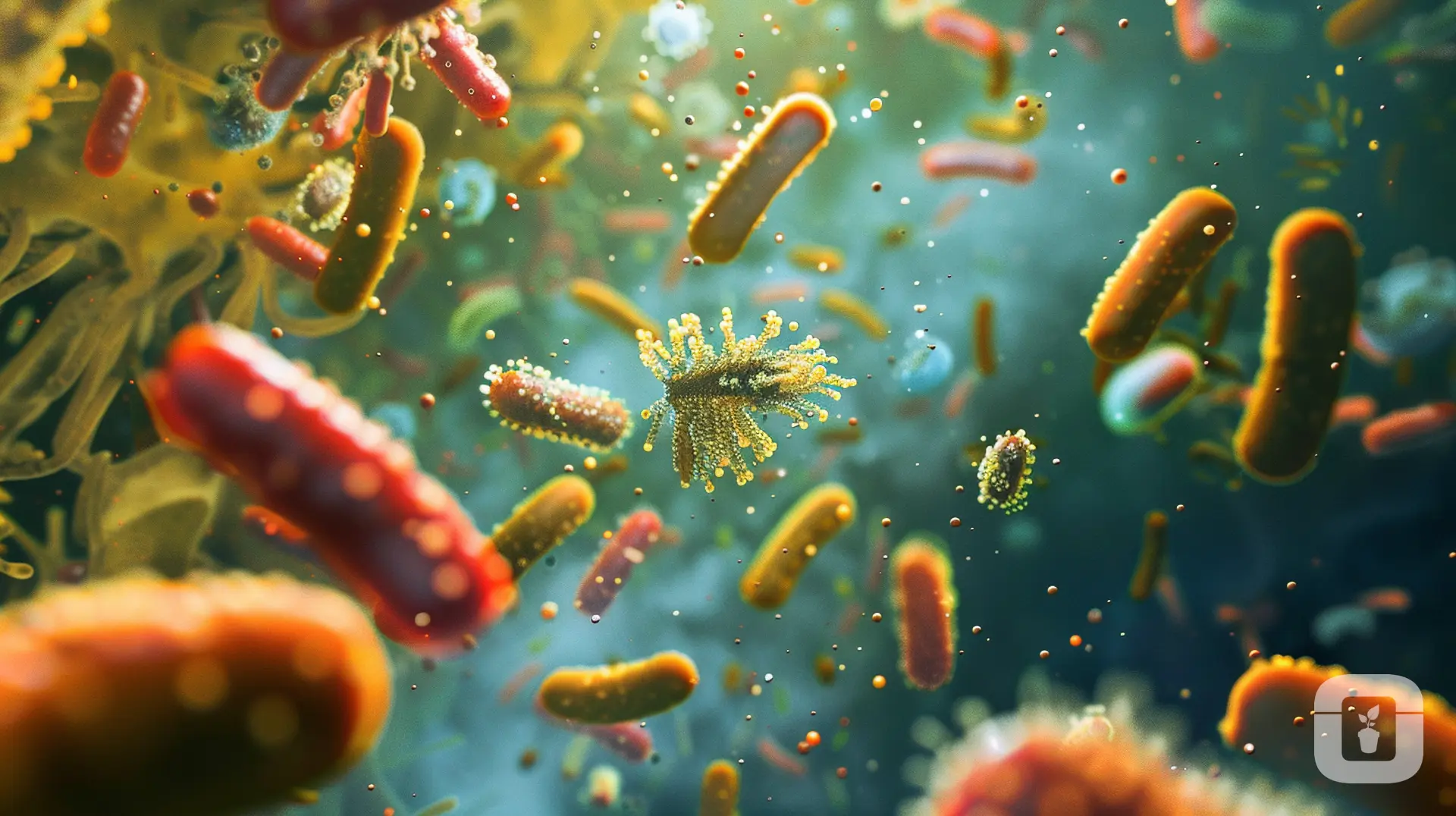
Root Inoculat (Soil Steroids)

Making your own root inoculant is a valuable practice since when it comes to gardening and growing indoor plants, unlikely gardeners often focus on the visible and more obvious aspects of our plants—the lushness of leaves, the vibrancy of flowers, and the bounty of fruits and vegetables. Yet, beneath the surface of our grow media and soil lies an unseen universe teeming with life, a complex community of microorganisms that play a crucial role in the health and vitality of our green friends. This microbial life, including bacteria, fungi, protozoa, and nematodes, forms the foundation of a healthy soil ecosystem, influencing nutrient cycling, soil structure, and plant health.
As gardeners, we need to care about fostering a healthy and diverse microbial life within our grow media. The reasons are manifold and deeply interconnected with the very essence of what we are trying to accomplish. Here are 5 reasons why a root inoculant is critical to our overall gardening and plant care success.
- Nutrient Cycling and Availability: Microbial life in the soil is essential for breaking down organic matter, transforming it into nutrients that plants can easily absorb. These microorganisms are the unseen alchemists of the garden, converting dead matter into life-sustaining minerals and compounds. By encouraging a rich microbial community, unlikely gardeners ensure that plants receive a balanced diet, tailored by nature itself.
- Soil Structure and Aeration: The activity of soil microbes, particularly fungi and bacteria, contributes to the formation of soil aggregates—small clumps of soil particles held together. These aggregates improve soil structure, enhancing aeration and water retention, which are crucial for root development and plant health. Healthy, structured soil is the bedrock upon which thriving gardens are built.
- Disease Suppression: A diverse microbial community acts as a natural defence system for plants, suppressing pathogens and reducing the incidence of diseases. Much like the human microbiome protects us from harmful bacteria, the soil microbiome guards plants against invaders, creating a healthier, more resilient garden ecosystem.
- Symbiotic Relationships: Certain microbes form symbiotic relationships with plants, most notably mycorrhizal fungi, which colonize plant roots and extend far into the soil, increasing a plant's access to water and nutrients. In return, plants supply these fungi with carbohydrates produced through photosynthesis. This mutualistic relationship epitomizes the harmony possible within a well-balanced soil ecosystem.
- Enhanced Plant Growth and Resilience: Studies have shown that plants grown in soil with a rich microbial life exhibit enhanced growth, yield, and resilience to environmental stresses such as drought and salinity. This resilience is particularly important in the face of climate change, as gardeners seek ways to adapt and sustain their practices.

The following Unlikely Gardener post is all about creating a fermented root inoculant from the soil around us. For me it comes from the healthy forests of the Pacific Northwest (actually for me in Canada, it's from the South West Coast of British Columbia, but wherever you are from you can introduce a broad spectrum of beneficial microbes into your garden soil, by inoculating your plants with the essence of a thriving natural ecosystem. This practice is not just about improving plant health; it's a commitment to nurturing the soil, preserving biodiversity, and embracing the holistic view that healthy soil leads to healthy plants, which in turn leads to healthy people and a healthy planet.
This post is an invitation to unlikely gardeners everywhere to explore the unseen, to value the microscopic, and to cultivate a garden teeming with life, both seen and unseen.
Let's get started...
Materials Needed
This unlikely gardening journey requires some basic materials, most of which you might already have at home or can easily obtain from your local supermarket or hardware store:
- A clean, medium-sized bucket or container to mix and ferment your inoculant.
- Non-chlorinated water, which is crucial as chlorine can harm the beneficial microbes we aim to cultivate.
- Molasses (unsulfured) acts as a food source for the microbes, encouraging their growth and activity.
- Fresh soil from a healthy forest or similar wilding area, the source of our beneficial microbes.
- A stirring utensil for mixing the ingredients ( I use the wooden spoon my ass used to get hit with).
- Cheesecloth or a similar breathable fabric to cover the fermenting mixture, allowing air in while keeping unwanted debris out. You can use a discarded silk shirt or old silk sheets from Goodwill too.
- Rubber bands, twine, or string to secure the cloth over your container.
- A storage container with a lid for keeping your finished inoculant. This container should be clean and capable of being sealed. An old milk jug works great, I use 1 gallon vinegar jugs (cleaned).
Step-by-Step Guide
1. Gathering Soil
The adventure begins in a healthy, vibrant forest or wilding area, away from pollutants and disturbances. Here, you're not just collecting soil; you're inviting a diverse community of microbes into your garden. Look for areas rich in organic matter, under diverse vegetation. Collect a few cups of this precious earth, taking care not to disturb the forest floor or natural area anymore than necessary. Gathering from several different areas will add more variety to your inoculant brew.
2. Preparing the Mixture
In your chosen container, combine the gathered soil with non-chlorinated water at a ratio of 1:5. This dilution is crucial for creating an environment where microbes can disperse and grow. Add a tablespoon of molasses per gallon of your mixture to feed the microbial growth. Stir well to ensure everything is evenly mixed.
3. Fermentation
Cover your mixture with cheesecloth or silk, securing it with the rubber band, twine, or string. This setup allows the microbiome mixture to breathe—an essential part of the fermentation process. Over the next week, make it a daily ritual to stir the mixture, integrating air and distributing the microbes throughout. You'll know the fermentation is active by the frothy foam that appears and the rich, earthy aroma that emerges.
4. Straining and Storage
After a week, the mixture will be ripe with microbial life. Strain it to separate the liquid inoculant from the solid material. A paper coffee filter works great for the purpose. This liquid gold is what you'll introduce to your garden. Store it in a clean, sealed container (another milk or vinegar jug works great), placing it in a cool, dark place until needed. Properly stored, it can last for several months. Check it every couple of days as it will often keep fermenting and will need venting.
5. Application
When it's time to enrich your garden, dilute the inoculant with water—about 1 part inoculant to 10 parts water—and use it to water your plants. It's particularly beneficial during initial planting or transplanting, giving your plants a robust microbial community to support their growth.
Tips and Considerations
- Diversity is Key: Different forests or wilding areas host different microbial communities. Consider making inoculants from various places to introduce a broader range of microbes to your garden.
- Monitor and Adapt: The fermentation process is influenced by environmental conditions. Be observant and adjust the fermentation time as needed based on the activity you see.
- Safety First: When collecting soil, ensure you're doing so responsibly and ethically, without harming the natural environment.
The Last Word
In our quest for healthy plants and gardens, we often overlook the simplest solutions provided by nature. Creating a fermented root inoculant from healthy natural soil is an empowering step towards sustainable gardening. It connects us to the ancient cycles of life and death in the soil, teaching us to foster life in our gardens with the wisdom of the land. As we share our experiences and learn from each other, we grow an unlikely gardening community rooted in respect for the earth and dedication to its care. Doing this yourself at home also saves a ton of money compared to buying a commercial root inoculant and always delivers a far better and wider variety of microscopic life to better enhance your soil's ability to support life.
Have fun!
Life is busy. Give Us Your Name & Email and We'll Send You Content.

I live in the woods, this is going to be great ty unlikely gardener